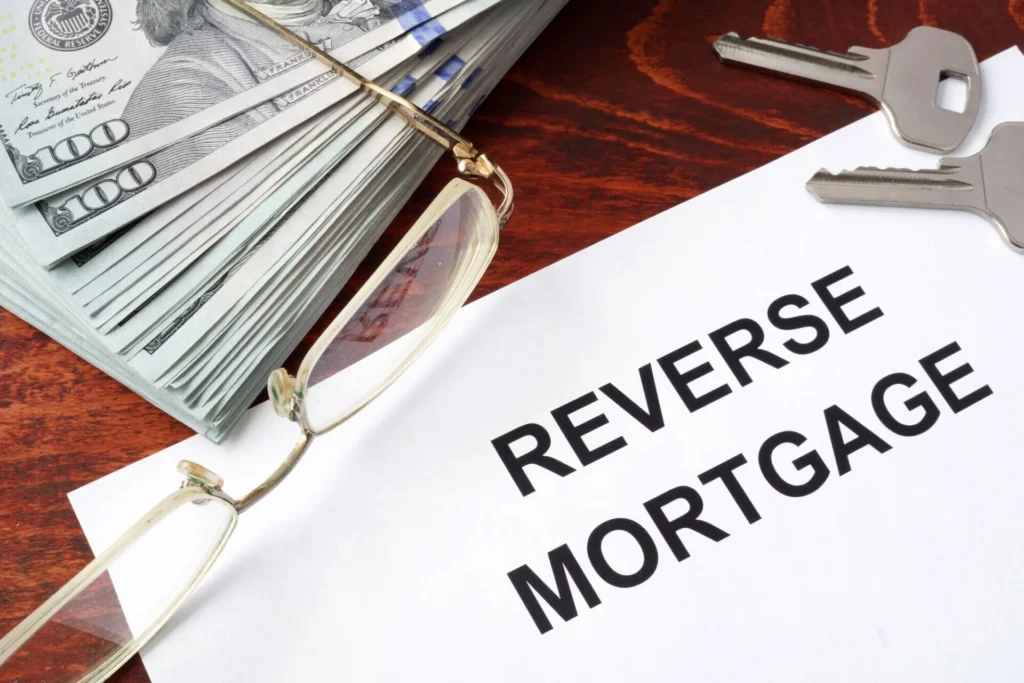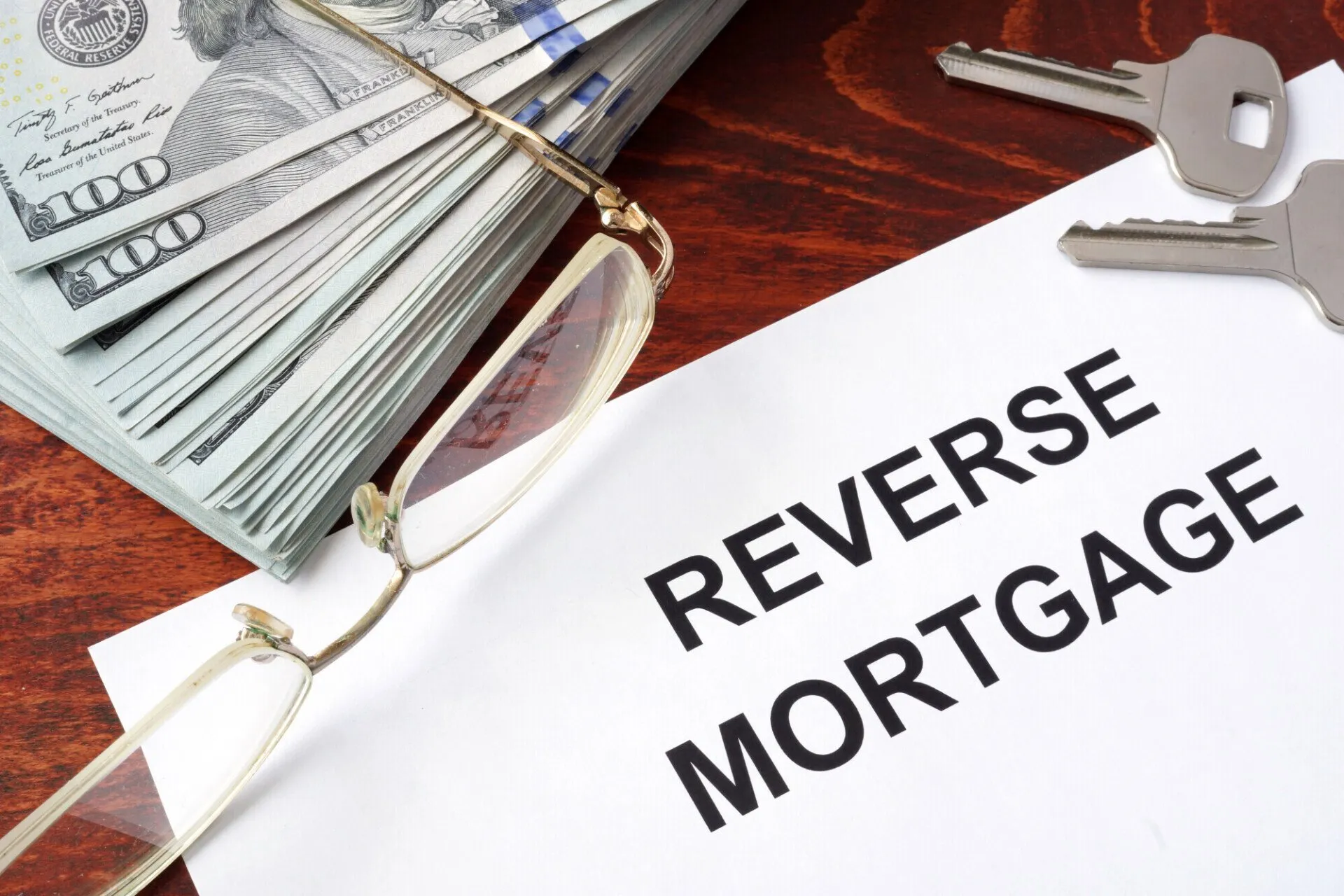A reverse mortgage is a financial product that allows homeowners, typically aged 62 or older, to convert part of the equity in their home into cash. This type of mortgage, unlike traditional home loans, does not require the homeowner to make monthly payments. Instead, the loan is repaid when the homeowner sells the home, moves out, or passes away. Reverse mortgages can be an invaluable tool for older adults who want to access home equity to support their retirement, but they come with specific risks and considerations that require careful evaluation.

What Is a Reverse Mortgage?
A reverse mortgage allows eligible homeowners to borrow money against the value of their home without making monthly payments. The lender makes payments to the homeowner, either as a lump sum, monthly payments, or a line of credit. These payments are tax-free and can be used for any purpose, such as covering daily living expenses, medical bills, or home repairs.
The most common type of reverse mortgage is the Home Equity Conversion Mortgage (HECM), which is backed by the Federal Housing Administration (FHA). HECMs are the most widely used, as they offer more favorable terms and protections for borrowers compared to other types of reverse mortgages.
Unlike traditional mortgages, where the borrower makes monthly payments to the lender, a reverse mortgage does the opposite. The lender makes payments to the borrower, and the loan balance increases over time. The amount of money owed on the reverse mortgage includes the principal, interest, and any fees associated with the loan. The loan is repaid when the homeowner sells the home, moves out, or passes away, at which point the home is typically sold to settle the debt.
Eligibility Requirements
To qualify for a reverse mortgage, the homeowner must meet several criteria. The primary eligibility requirements include:
- Age: The borrower must be at least 62 years old. In cases where there are two homeowners, both must meet the age requirement.
- Home Equity: The homeowner must have significant equity in the home. The more equity a homeowner has, the higher the loan amount they may qualify for.
- Primary Residence: The home must be the borrower’s primary residence. Vacation homes or rental properties do not qualify for a reverse mortgage.
- Ability to Maintain the Home: While the borrower does not need to make monthly mortgage payments, they are still responsible for maintaining the home, paying property taxes, and keeping up with homeowners insurance.
- Creditworthiness: Although reverse mortgages do not require monthly payments, lenders will still assess the borrower’s credit and income to ensure they can afford to maintain the home.
How Reverse Mortgages Work
A reverse mortgage works by allowing the borrower to access the equity in their home without having to make monthly payments. The loan is repaid when the homeowner moves out, sells the house, or passes away.
The lender determines the amount the borrower can borrow based on several factors, including:
- The homeowner’s age: Older borrowers can typically access more equity.
- The appraised value of the home: The higher the value of the home, the more equity is available to borrow.
- Current interest rates: Lower interest rates can result in higher loan amounts.
- The type of reverse mortgage: HECMs, for instance, offer more flexible terms than proprietary reverse mortgages.
The borrower can choose to receive the loan proceeds in different ways:
- Lump sum: A one-time payment that can be used for any purpose.
- Monthly payments: Regular payments over a set period or for as long as the borrower lives in the home.
- Line of credit: The borrower can access funds as needed up to a set limit.
Advantages of Reverse Mortgages
Reverse mortgages offer several benefits, particularly for older homeowners who may be struggling with financial security in retirement. Some of the key advantages include:
- No Monthly Payments: One of the most attractive features of a reverse mortgage is that it eliminates the need for monthly mortgage payments. This can provide significant relief to retirees living on a fixed income.
- Access to Home Equity: Homeowners can access the equity in their home without having to sell it, move, or take on additional debt. The money can be used for anything, from healthcare costs to home improvements or supplementing retirement income.
- Tax-Free Payments: The payments received from a reverse mortgage are not considered taxable income, so they don’t impact the homeowner’s taxes.
- No Risk of Foreclosure: As long as the homeowner continues to live in the home, pays property taxes, and keeps up with homeowners insurance, they cannot be foreclosed on. The lender cannot demand repayment until the homeowner moves out or passes away.
Disadvantages and Risks
While reverse mortgages can be beneficial, there are several risks and downsides that need to be considered before proceeding with this financial option.
- Accruing Debt: Since the homeowner doesn’t make monthly payments, the loan balance increases over time as interest accrues. This means that the homeowner may owe more than the home is worth when the loan comes due.
- Reduced Inheritance: Because the loan is repaid when the homeowner passes away, the amount of money left for heirs may be reduced, as the home must be sold to settle the debt.
- Upfront Costs: Reverse mortgages can have high upfront costs, including origination fees, closing costs, and mortgage insurance premiums, which can eat into the amount of equity available to the homeowner.
- Impact on Benefits: The payments received from a reverse mortgage may impact eligibility for certain government programs, like Medicaid or Supplemental Security Income (SSI).
Conclusion
Reverse mortgages can be an excellent option for older homeowners who need to access their home equity without selling their property or making monthly payments. They can provide a much-needed source of income during retirement, but they are not without their risks. Homeowners considering a reverse mortgage should carefully weigh the pros and cons, and consult with a financial advisor or reverse mortgage specialist to determine if it is the right choice for their specific situation. Like any financial product, reverse mortgages require thorough research to ensure that they align with the homeowner’s long-term goals and needs.
